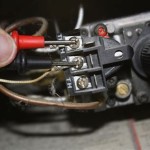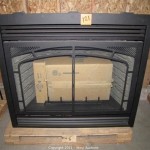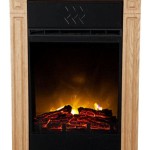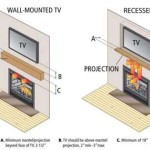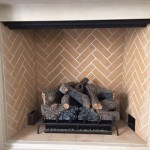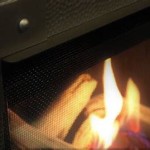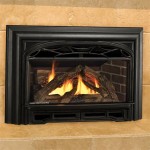Most Efficient Direct Vent Gas Fireplace Insert
Direct vent gas fireplace inserts offer a convenient and efficient way to upgrade an existing masonry or factory-built fireplace. These inserts not only provide aesthetic appeal but also serve as a reliable source of supplemental heat. Efficiency is a key consideration when selecting a direct vent gas fireplace insert, as it directly impacts energy costs and overall heating performance. This article explores the factors contributing to the efficiency of direct vent gas fireplace inserts and highlights several models known for their high efficiency ratings.
A direct vent gas fireplace insert operates by drawing combustion air from outside the home and venting exhaust gases directly outdoors through a sealed venting system. This design eliminates concerns about indoor air quality and reduces the risk of carbon monoxide poisoning. The sealed combustion chamber also contributes significantly to improved efficiency compared to traditional open-hearth fireplaces, which often lose a substantial amount of heat up the chimney.
Understanding Efficiency Ratings
The efficiency of a direct vent gas fireplace insert is typically measured using two primary ratings: Annual Fuel Utilization Efficiency (AFUE) and Steady State Efficiency. AFUE represents the overall seasonal efficiency of the unit, taking into account pilot light operation, standby losses, and cycling losses. Steady State Efficiency, on the other hand, measures the efficiency of the unit once it has reached its operating temperature and is running continuously. Both ratings are expressed as percentages, with higher percentages indicating greater efficiency.
AFUE provides a more comprehensive assessment of the unit's real-world efficiency, as it accounts for factors beyond just the combustion process. While Steady State Efficiency can offer insights into the unit's peak performance, AFUE is often a more reliable indicator of long-term energy savings. Consumers should carefully consider both ratings, but generally prioritize AFUE as a primary factor in their decision-making process.
It's important to note that efficiency ratings can vary depending on the specific model, size, and venting configuration of the fireplace insert. Factors such as the length and layout of the venting system, the altitude of the installation location, and the installation practices can all influence the actual efficiency achieved in a particular home. Consulting with a qualified HVAC professional or fireplace installer can help ensure that the chosen insert is properly sized and installed for optimal performance.
Furthermore, advancements in technology have led to the development of more efficient direct vent gas fireplace inserts with features such as modulating gas valves, electronic ignition systems, and improved heat exchanger designs. These features contribute to reduced energy consumption and improved heating performance compared to older or less advanced models.
Key Features Enhancing Efficiency
Several key features can significantly impact the efficiency of a direct vent gas fireplace insert. Understanding these features can help consumers make informed decisions when selecting a unit.
Sealed Combustion Chamber: This is the foundation of direct vent technology and prevents the leakage of combustion gases and indoor air. The sealed chamber ensures that all combustion air is drawn from outside, minimizing heat loss up the chimney.
Modulating Gas Valve: A modulating gas valve allows the fireplace insert to adjust its gas input based on the heating demand, rather than simply operating at a fixed high or low setting. This enables the unit to maintain a consistent temperature while using only the amount of gas necessary, resulting in improved efficiency and reduced energy waste.
Electronic Ignition: Electronic ignition systems eliminate the need for a standing pilot light, which constantly consumes gas. These systems use an electronic spark to ignite the burner only when heat is needed, saving energy and reducing standby losses.
Heat Exchanger Design: The heat exchanger is responsible for transferring heat from the combustion process to the room. Advanced heat exchanger designs maximize heat transfer efficiency by increasing the surface area exposed to the flue gases and optimizing the flow of air around the combustion chamber. Materials used in the heat exchanger, such as cast iron or steel, also play a role in heat retention and distribution.
Programmable Thermostat: A programmable thermostat allows homeowners to set specific temperature schedules for different times of the day, optimizing energy usage based on occupancy patterns. This feature ensures that the fireplace insert is only running when heat is needed, reducing energy waste and lowering heating costs.
Variable Speed Blower: A variable speed blower circulates heated air from the fireplace insert into the room. The blower speed can be adjusted to optimize airflow and heat distribution, ensuring that the entire space is evenly heated. Some models also feature a thermostatic control that automatically adjusts the blower speed based on the room temperature.
Zone Heating Capabilities: Direct vent gas fireplace inserts are ideal for zone heating, allowing homeowners to heat specific areas of the home rather than the entire house. This can significantly reduce energy consumption, as unused rooms can be kept at a lower temperature. Zone heating is particularly beneficial in homes with open floor plans or those with large, unoccupied spaces.
High-Efficiency Models and Considerations
Several direct vent gas fireplace insert models are renowned for their high efficiency ratings. While specific models and their ratings can change over time due to technological advancements and regulatory updates, understanding the general characteristics of efficient options can guide the selection process.
When evaluating models, prioritize those with high AFUE ratings, typically above 70% or even 80%. Read customer reviews and consult with experienced installers to gain insights into real-world performance and reliability. Consider the size of the space to be heated and select a model with an appropriate BTU (British Thermal Unit) output. An oversized unit may cycle frequently, reducing efficiency, while an undersized unit may struggle to maintain the desired temperature.
Pay close attention to the venting requirements of the chosen model. Proper venting is crucial for safe and efficient operation. Consult the manufacturer's specifications and follow all local building codes. Incorrect venting can lead to reduced efficiency, increased carbon monoxide risk, and potential damage to the unit.
Regular maintenance is essential for maintaining the efficiency and longevity of a direct vent gas fireplace insert. This includes cleaning the burner, inspecting the venting system, and checking for any signs of damage or wear. Follow the manufacturer's recommendations for maintenance procedures and schedule annual professional inspections to ensure that the unit is operating safely and efficiently.
The initial cost of a high-efficiency direct vent gas fireplace insert may be higher than that of a less efficient model. However, the long-term energy savings can often offset the initial investment, particularly in areas with high gas prices or prolonged heating seasons. Consider the lifecycle cost of the unit, including purchase price, installation costs, operating expenses, and maintenance costs, when making a final decision.
Beyond the fireplace insert itself, consider ways to improve the overall energy efficiency of the home. Insulating walls and ceilings, sealing air leaks around windows and doors, and upgrading to energy-efficient windows can all contribute to reduced heating demand and lower energy bills. Improving home insulation can also enable the fireplace insert to operate more efficiently, as it will not have to work as hard to maintain the desired temperature.
The availability of rebates and tax credits can also influence the final cost of a high-efficiency direct vent gas fireplace insert. Many local, state, and federal programs offer incentives for energy-efficient appliances, making such products more affordable. Research available incentives and factor them into the cost analysis when comparing different models.
Ultimately, selecting the most efficient direct vent gas fireplace insert involves a careful assessment of individual needs, budget constraints, and home characteristics. By understanding the factors that contribute to efficiency, considering various models and features, and consulting with qualified professionals, homeowners can make informed decisions that provide both comfort and energy savings.

Freestanding High Efficiency Direct Vent Gas Fireplaces Inserts Stoves Godby Hearth And Home

Slayton 60 Direct Vent Linear Gas Fireplace Kozy Heat
.aspx?strip=all)
Top 11 Gas Fireplace Insert Trends Of 2024

Best Gas Fireplace Inserts Fireplaces Direct Learning Center

How To Find The Most Efficient Direct Vent Gas Fireplace For Your Next Project

Pros And Cons Of Direct Vent Gas Fireplaces Tarantin Industries

Best Gas Fireplace Inserts Fireplaces Direct Learning Center

Majestic 30 Inch Ruby Direct Vent Gas Fireplace Insert With Blower

Rushmore 30 Direct Vent Fireplace Insert Fine S Gas

Best Gas Fireplace Insert Efficient Heating Solution

